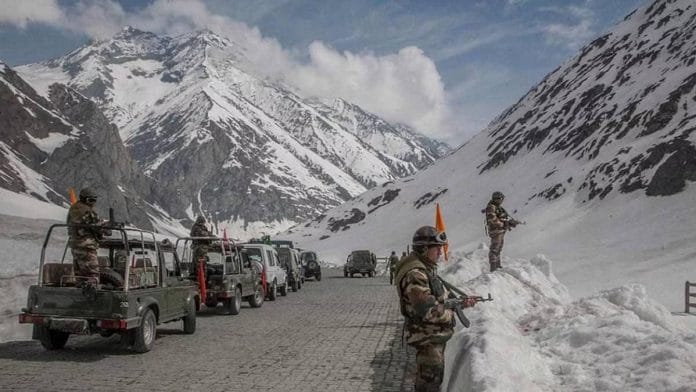New Delhi: China Wednesday claimed that National Security Advisor Ajit Doval and Foreign Minister Wang Yi — the Special Representatives for China-India Boundary Question — have reached “six points of consensus” for an “acceptable package”, which harks back to the “2005 agreement” on the vexed border issue.
However, the Ministry of External Affairs statement following the meeting in Beijing did not mention any such consensus.
While the MEA did not formally deny the Chinese claims of consensus, sources said the readout from China was not a joint statement, adding that joint statements are made when both sides have agreed to points.
The statement by the Chinese Foreign Ministry said that both sides positively evaluated the resolution reached on border-related issues and reaffirmed the need to continue implementing the agreement.
They agreed that border issues should be handled appropriately in the context of the overall bilateral relationship to ensure those do not affect the development of bilateral ties.
“Both sides reaffirmed their commitment to continuing to seek a fair, reasonable, and mutually acceptable package solution to the border issue in accordance with the political guiding principles agreed upon by the two countries’ special representatives in 2005,” it said.
It was not yet known what the 2005 agreement was all about.
The statement added that both sides agreed to refine the management rules for the border areas, strengthen confidence-building measures, and achieve sustainable peace and stability along the border.
“Both sides agreed to continue enhancing cross-border communication and cooperation, promoting the resumption of pilgrimages by Indian pilgrims to Xizang, cooperation on cross-border rivers, and trade at the Nathu La Pass,” it said.
The Indian statement, on the other hand, said, “The SRs [special representatives] reiterated the importance of maintaining a political perspective of the overall bilateral relationship while seeking a fair, reasonable and mutually acceptable framework for settlement of the boundary question, and resolved to inject more vitality into this process.”
The 23rd round of the special representatives’ talks were held after a gap of five years. It was last hosted by India in 2019.
The Indian statement said that Wang Yi pushed for discussions around the boundary question to be placed at the “appropriate position” in bilateral ties and pushed for the two countries to open commercial ties. It did not elaborate on what the “appropriate position” would be.
On 21 October this year, the two countries agreed to disengage at friction points, which led to a bilateral meeting between Prime Minister Narendra Modi and Chinese President Xi Jinping on the margins of the BRICS Summit in the Russian city of Kazan on 23 October.
The two leaders agreed to restart discussions between the special representatives as a part of the normalisation of bilateral ties.
Doval also later called on China’s Vice President Han Zheng.
(Edited by Madhurita Goswami)
Also Read: Depsang ‘resolved’, patrolling to ‘agreed perceived LAC’. What India & China have agreed on







Why does the writer say that “It was not yet known what the 2005 agreement was all about.” When the MEA website clearly mentions all the 11 articles of the 2005 agreement. India should never be uneasy about this agreement as the prime objective is to resolve he boundary issue. Still India has not made its position clear after the recent talks. It is understandable from GoI, but why did the author say that nobody knows about it.
https://www.mea.gov.in/bilateral-documents.htm?dtl/6534/Agreement+between+the+Government+of+the+Republic+of+India+and+the+Government+of+the+Peoples+Republic+of+China+on+the+Political+Parameters+and+Guiding+Principles+for+the+Settlement+of+the+IndiaChina+Boundary+Question
The Guiding principles agreed to by the two sides were the closest India and China have come to settling the boundary dispute. One clause refers to “ not disturbing settled populations “, which fits Arunachal Pradesh perfectly. The institutional memory of MEA contains a lot that is valuable, since India’s issues with Pakistan, later China, are as old as the Republic itself. Unclear why senior diplomats wish to erase acknowledging good work done in the past by their predecessors.